Ohio is known as the Buckeye State because of the vast numbers of Buckeye trees in the state. It’s also known as the birthplace of aviation because the Wright Brothers first had their shop and headquarters here. Ohio also has many lost and hidden treasures that are awaiting discovery.
In the lost treasures of Ohio, we will explore 9 of these lost treasures. Read on and you will learn about a lost French payroll from the 1750s, a train wreck and $2 million in lost gold, Gangster John Dillingers buried loot, the possibility of a treasure chest of Napoleon Bonapartes buried in Ohio, and other fascinating stories.
If you are ready pull out a pen and paper and take some notes and maybe you will be able to locate one of these lost treasures of Ohio!
9 Lost Treasures of Ohio
| TREASURE | AMOUNT | LOCATION |
|---|---|---|
| Buried Chest of Silver | A chest of $4,500 in silver | Buried in an orchard in either Concord Township in Lake County, or Chardon Township in Geauga County Ohio |
| Pacific Express Train Wreck Treasure in Ashtabula | $2 million in gold bullion | Ashtabula River |
| Lost French Payroll | $13 million in gold and silver | 4 miles east of Minerva, Ohio in West Township. |
| Ex Pirate John Baldwins Hidden Treasures | Unknown | Lancaster Ohio on the northeast corner of Pleasantville Road and Marietta Road in Fairfield County. |
| John Dillinger’s Buried Loot On The Pierpont Farm | Unknown | Harry Pierpont’s farm near Leipsic, Ohio. |
| Daniel Brown’s Buried Treasure | Between $80,000 and $100,000 in gold | On a farm that was located along the Cuyahoga River near Cuyahoga Falls, Ohio. |
| Andrew Meyers & Napoleon’s Treasure | Unknown | Meyers property near Canton Ohio |
| Riverboat Pirates Lost Booty | $24,000 in gold and silver coins, jewelry, and watches | On the bluffs overlooking the Ohio River about a mile northeast of Crown City, Ohio |
| Gold Bars Buried On The Banks of The Grand River | $100,000 worth of gold bars | Somewhere on the west bank of the Grand River in Ohio. |
Buried Chest of Silver
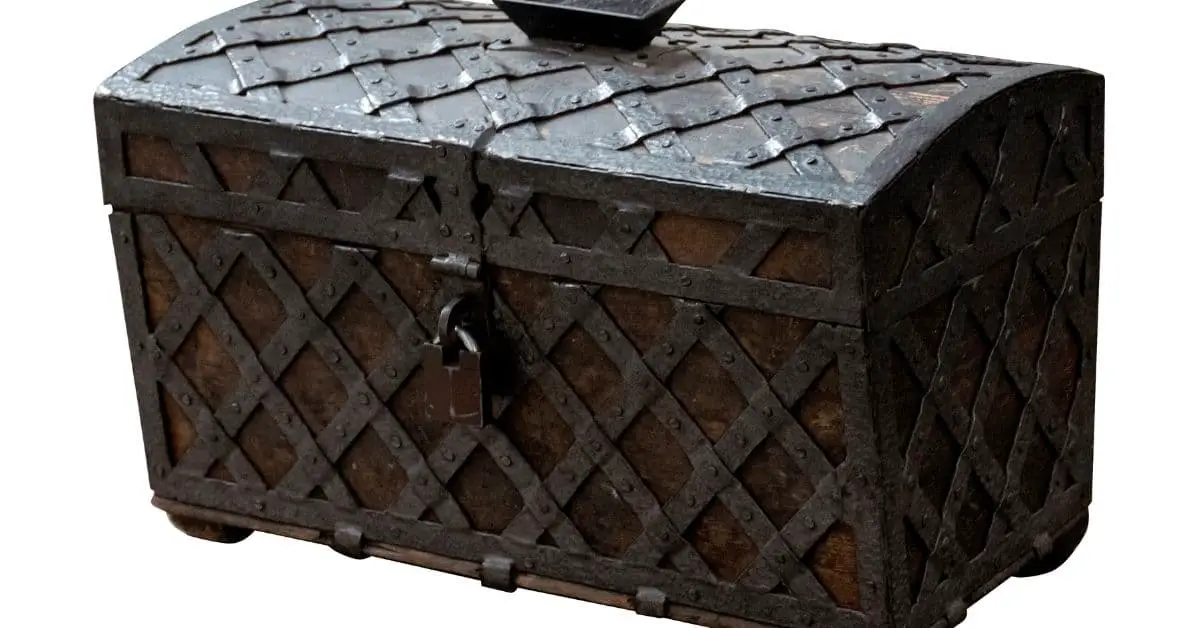
According to a newspaper article dated September 28, 1899, in the Fairmount Newspaper, a man by the name of H.B. Merrill was working on the roof of his house and he came across an old leather pocketbook that was hidden in the rafters of his roof. The pocketbook contained a letter that stated that a chest of $4,500 in silver was buried in an orchard somewhere on the farm.
The farm which was owned by the Merrill family was about 7 miles south of Painesville, Ohio. It is reported that the Merrill family did own farms in both Concord Township and Chardon Township which both lie within 7 miles of Painesville.
By all accounts, the chest of silver has never been recovered and is still buried in an orchard in either Concord Township in Lake County, or Chardon Township in Geauga County Ohio. If the silver is really there it would be worth about $140,000 now. Keep in mind the orchard might be long gone by now. But with some research into the Merrill family and the area in question might return a handsome profit!
Pacific Express Train Wreck Treasure in Ashtabula
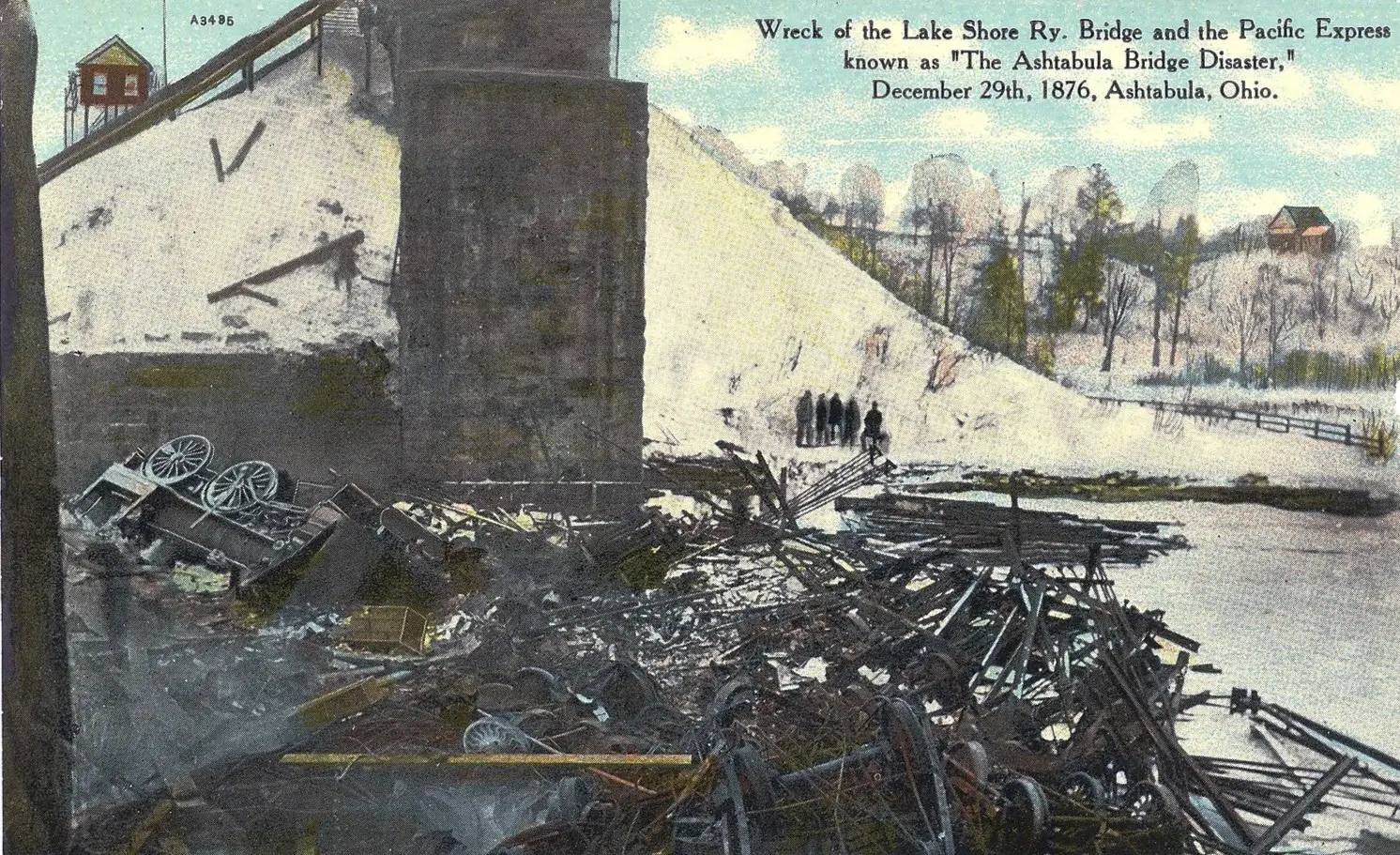
A horrible disaster took place on December 29, 1876. The Pacific Express train owned by The Lake Shore and Michigan Southern Railway plunged into the Ashtabula River close to Ashtabula, Ohio. The night was very cold and winds were blowing snow an all-out blizzard was at hand.
When the train burst through the snow onto the Ashtabula bridge over the river it plunged seventy-five feet into the river gorge below when the bridge gave way. The eleven-car, two-engine train quickly ignited into flames causing mass casualties of passengers of the train. The crash could be heard from miles around several near witnesses claimed.
Those who didn’t die from fire froze or drowned because of the cold temperatures and the icy river water. Total deaths were reported at being of over 90 of the 159 passengers and crew that were aboard at the time. In the end, all that was left of the train was its metal components and the leading locomotive which made it to the other side of the bridge before it collapsed.
It is said that one of the cars on the Pacific Express was carrying $2 million in gold bullion when it plunged into the Ashtabula River. If the gold is still there it would be buried under over a century’s worth of mud, not an easy find to say the least. But with a good underwater metal detector, a treasure hunter just might become a million if that gold was recovered.
If you would like to read more about this train wreck you can check out newspaper accounts from the late 1800s here.
Lost French Payroll
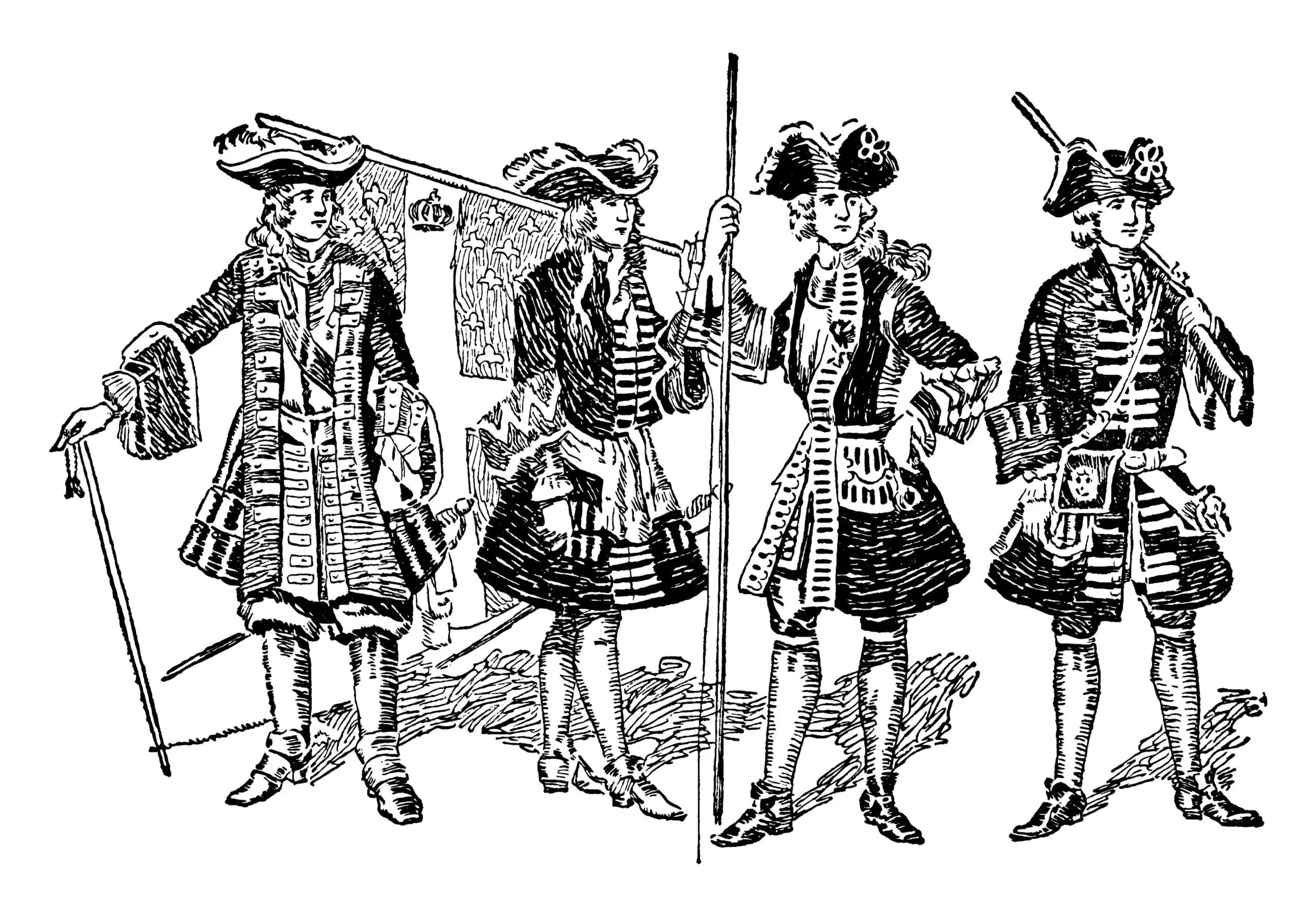
In 1755 the French had a claim to the country northwest of the Ohio River which was called New France. The British along with some Indians were determined to take some of this land and Major General Edward Braddock of the British forces was sent with troops and Indians to take Fort Duquesne (which is now Pittsburgh Pennsylvania) from the French.
Knowing this was to take place the French decided to send 10 men and a train of horses with the French Military Payroll to Fort Detroit to save keeping. So they went on their way via the Great Trail which was a network of footpaths that the Indians had made prior to the arrival of the Europeans. The French troops made it as far as what’s now known as Minerva Ohio.
Lookout scouts of the French informed them that the British were gaining on them so they decided to bury the gold. But soon after the British attacked the 10 Frenchmen and only two of them survived. The two French soldiers left markers in the area to help identify where the gold was buried. Soon the British gained control of the area around Minerva and the French were unable to return for their treasure.
A letter was written by one of the surviving soldiers stating that the buried treasure could be found one mile east of a tree that had a carving of a deer on it and a stone was placed in the fork of a tree that was eleven feet up a spring one half mile west. The shovels that they used were placed 600 steps north under a large log.
Ongoing Search For Treasure
Years passed and according to reports and a newspaper article was written on April 3, 1876, this soldier’s nephew was left this letter by him when he died in North Carolina. So the nephew determined to find the buried treasure set off to the area where the treasure was told to be buried. But with no luck, the nephew of the soldier went back to North Carolina and never returned.
Over the years the markers that were in the letter were found and the shovels were found by a Mr. Rigbe on a farm owned by Mr. Robbins according to the newspaper article. The lost gold and silver payroll is estimated to be worth $13 million in today’s currency.
Treasure hunters have been searching for this treasure for about 250 years and every year you can find treasure hunters searching the area around Minerva, Ohio. The search area is now being focused 4 miles east of Minerva in West Township. If this treasure is still there the finder would be one lucky rich person!
Digging Deeper: Lost Treasures of North Carolina
Ex Pirate John Baldwins Hidden Treasures
John Baldwin is said to have been a member of the famous Jean Lafitte’s pirate crew. After John was pardoned for being a pirate he built a barn, brick inn, and tavern near Lancaster Ohio in 1818. He also built the first horse track in Fairfield County in 1825.
It is said that Baldwin would only accept gold coins for his business transactions and by all accounts he made a considerable amount of money from his tavern, in, and horse track. He is also known for burning much of his earnings in and around his property.
John died in 1840 and for years after treasure hunters have found some of his caches including a gold cache found in a hollowed-out stone in the barn and more gold in the attic. In total the property sites on 176 acres of land and treasure seekers have dug much of it up over the century. The Inn was finally demolished in 1951 and at one time was considered haunted.
According to Legend, some people were murdered in his tavern and inn and Baldwin would bury his victims on the property there. So if you go searching for some of his treasure you might end up digging up some graves as well. The property can be found near Lancaster Ohio on the northeast corner of Pleasantville Road and Marietta Road in Fairfield County.
Digging Deeper: Lost Treasures of Mississippi
John Dillinger’s Buried Loot On The Pierpont Farm
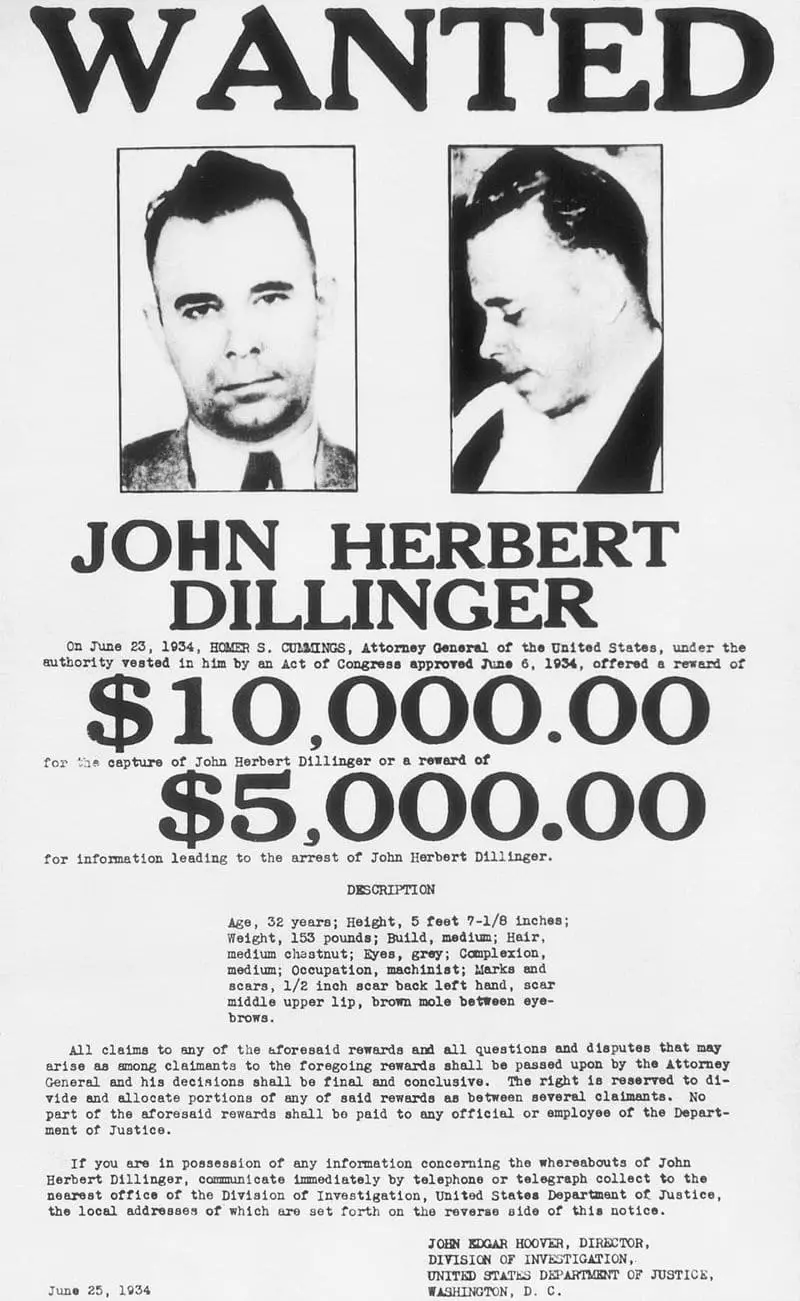
John Dillinger along with his gang Harry “Pete†Pierpont, Fat Charles Makley, and Russell Clark are said to have robbed between 10 and 20 banks in Northwestern Ohio in the summer of 1933. They would hide out at Harry Pierpont’s farm near Leipsic, Ohio.
Supposedly after one of the bank heists, the Dillinger gang drove back to the Pierpont farm with local authorities in hot pursuit. They quickly buried the loot somewhere in 7 acres of woods on the farm. They then drove away.
Just a year later in 1934, John Dillinger was gunned down by the FBI in Chicago after attending a movie there. The rest of the gang had been killed or arrested. By all accounts, the FBI watched the farm for months but known of the gang ever returned for the stolen loot and it has never been recovered.
A man by the name of Shroeder bought the Pierpont farm and had the buildings torn down for farmland. He says treasure hunters still come to the property to search for the treasure but he won’t let anyone dig there. He just shows them where the farm used to sit and he has not looked for the treasure himself.
If the treasure was ever buried there it’s probably long gone since it would have consisted of paper currency more than likely which would have rotted away by now unless it was enclosed in a waterproof case. Anyway, good luck getting permission to search for this lost treasure.
Daniel Brown’s Buried Treasure
Daniel Brown was a professional counterfeiter who lived from 1820 to 1851. It is said that Brown made a considerable amount of money counterfeiting. In 1850 he went to California and sold between $80,000 and $100,000 in counterfeit bills to gold miners there in exchange for gold dust, nuggets, and gold coins.
On his way back from California to his farm in Northampton township via a ship, he contracted scurvy. He was being pursued by authorities from California. Daniel died on January 21, 1851, before the detectives from California could get to him. When they found out that Brown had died they had his body exhumed to make sure it was him.
It was said that he only had $20,000 on him at the time of his death. Where was the rest of his ill-gotten gains? It is rumored that he buried the rest of the gold that he brought back from California somewhere on his farm that was located along the Cuyahoga River near Cuyahoga Falls, Ohio.
Andrew Meyers & Napoleon’s Treasure
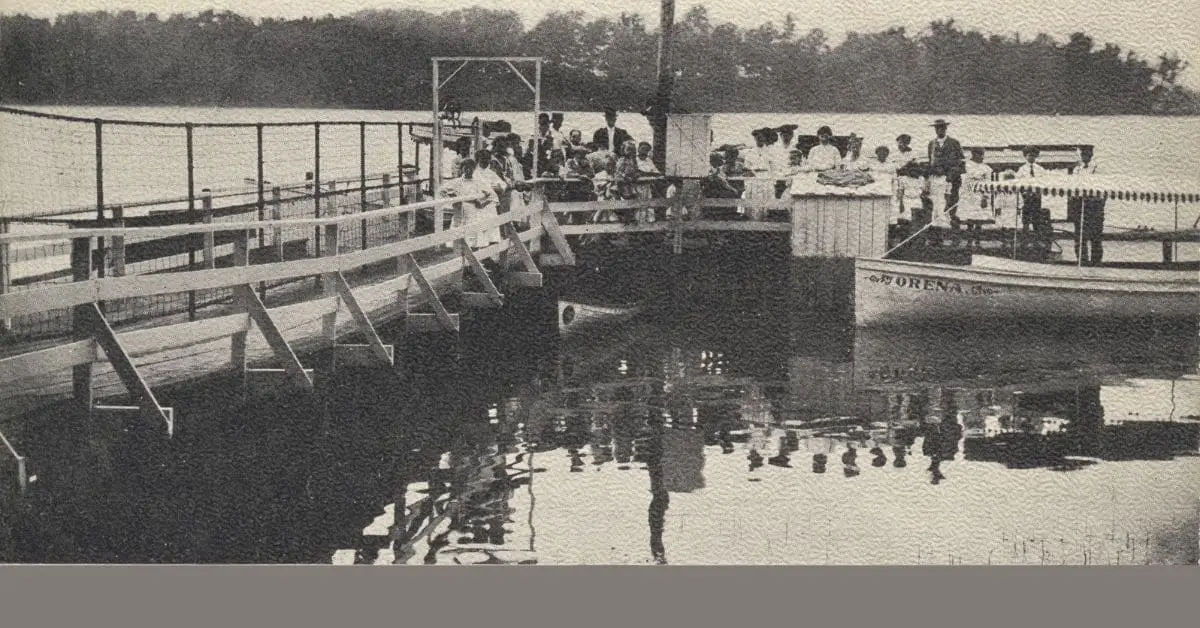
Andrew Meyer, his brother Francis and the rest of the Meyer family arrived in Baltimore, Maryland in the early nineteenth century. They were a wealthy family and Andrew and Francis both fought in the Napolean Wars. Francis had actually had the authority to watch over Napoleon Bonaparte’s material possessions. He was a security guard of sorts looking after a trunk that contained currency, gold, and war papers of Napoleon’s.
Because of his loyalty to Napolean, he was given many expensive gifts such as a sword with diamonds in the handle and a diamond-studded insignia. He was also awarded the Legion of Honor by Napoleon.
Andrew Meyer got tired of the hustle and bustle of city life in Baltimore and in 1816 he set off to new territory in the Ohio region. Andrew was very wealthy indeed. He even owned two ships that he let the U.S. Army use during the War of 1812 and for that, he was given land rights in Stark County Ohio.
Andrew Becomes a Business Man & Builds a Mansion
After a number of years as a successful businessman in Canton, Ohio he purchased more land around the land he had previously been awarded. In all, he now had about 2,500 acres at his disposal. He also purchased Well’s Lake which was later renamed Meyer’s Lake.
He then started construction on a seventeen-room mansion and had all the best construction materials and brick from Baltimore brought in to build the house. When it was finished in 1822 he had it furnished to the hilt with the finest furnishings of the times from all over the world. It was a sight to behold for Ohio in those days.
Andrew is also said to have owned a chest that was encrusted with jewels. Some believe this was Napoleon Bonapartes War Chest that his brother had watched over when they were part of Bonaparte’s Army. Although this I highly doubt it was one of the rumors.
Before Andrew Meyer died in 1848 some say they saw him sink a copper boat in his lake. His neighbor claimed he saw Andrew bury gold and rubies near the mansion. And yet others say Andrew armed with a shovel would frequently be digging holes along the waterfront of his lake.
So after Andrew died word got out of these buried treasures and treasure seekers from all around the area descended onto Andrew’s property looking for treasure. The Meyer family still owned the property and in 1888 Andrews grandson Edward Meyer became the owner.
Edward said for years after people would come to the property and dig for treasure. Some of them think that Napoleon’s chest is buried there. To this day no treasure had been found.
Unfortunately, Andrew Meyer’s Mansion burned down in 1975 after it had been in disrepair for years. Now a school site on the site where the mansion once stood. Napoleon’s treasure might not be there but it’s one interesting story and who knows there might be some treasure buried on the beaches at Meyers Lake.
Digging Deeper: Can You Metal Detect on School Property?
Riverboat Pirates Lost Booty
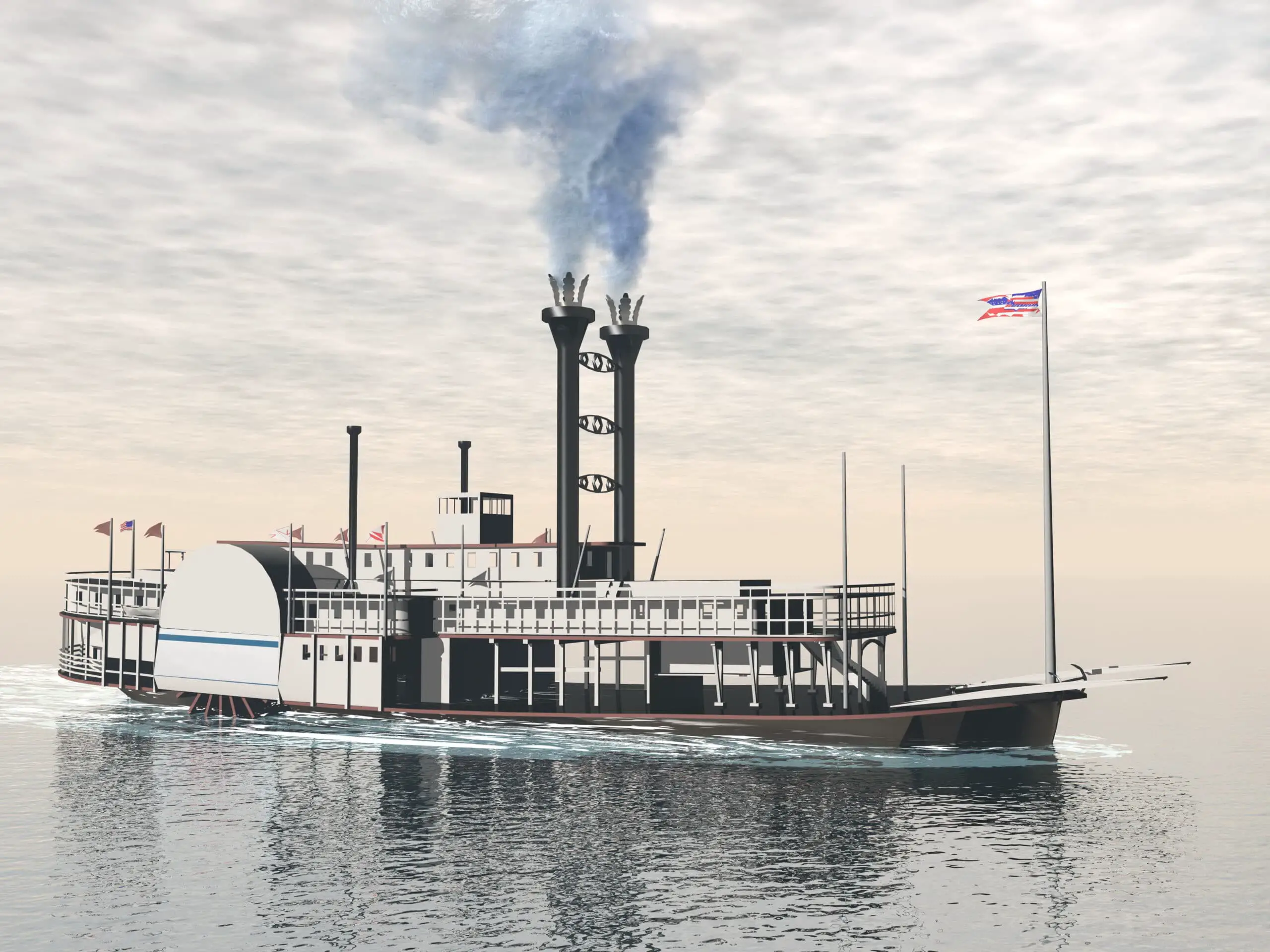
Riverboat Pirates once had their headquarters that overlooked the Ohio river about a mile northeast of Crown City Ohio. In 1876 the pirates boarded a steamboat that was making its way up the Ohio River. They got away with over $24,000 in gold and silver coins. They also robbed the passengers of their jewelry and watches.
A posse was formed and they caught the pirates at their hideout and they were all killed. The booty from the riverboat was never found and could still be buried somewhere on the bluffs overlooking the Ohio River.
Gold Bars Buried On The Banks of The Grand River
In 1862 a bank robber allegedly buried $100,000 worth of gold bars on the west bank of the Grand River. The location was about two miles from Lake Erie close to Fairport Harbor. On his deathbed, the robber claimed that the gold could be found three feet deep and 30 paces from a large oak tree on the river bank.
The gold bars have never been found and could still be buried somewhere on the west bank of the Grand River in Ohio.
Conclusion – Lost Treasures of Ohio
As you can see there are many fascinating lost treasure stories that come out of the great state of Ohio. Ohio is an interesting state historically and would be interesting to visit if you ever get the chance. And maybe you might be one of the lucky few who find a lost treasure.
If you have any questions or comments please leave them below. Until next time Happy Treasure Hunting!
Personal response requested please! Can you tell me of more treasures possibly lost or buried in southern region of Ohio please? I’m interested immensely in this!